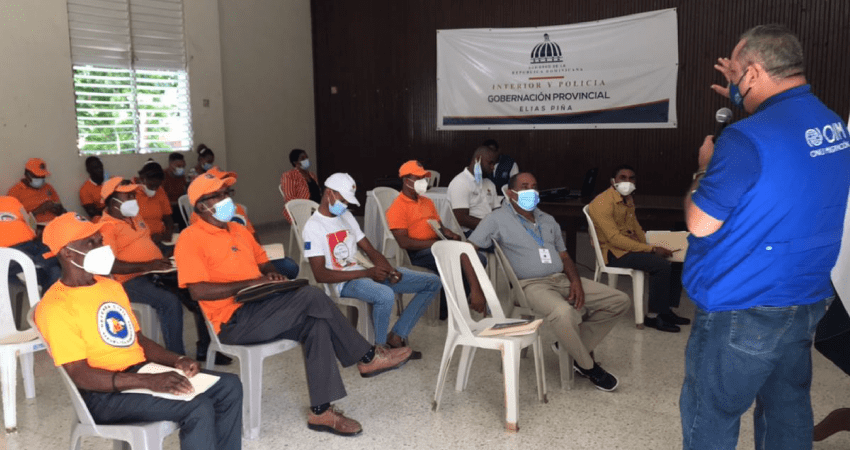The Dominican Republic Adapted and Strengthened the Manual for Management of Collective Centers

Santo Domingo. Last August, several activities were carried out in order to update, modify, improve or include topics in the Manual for the Management of Collective Centers in the Dominican Republic.
Among the activities carried out is a survey of national and international documents such as laws, rules, procedures, and manuals, achieving a review of approximately 23 documents which are: the Constitution of the Dominican Republic, Decree 360-01 through which the COE is created, Guide of COVID-19 in 2021 hurricane season, General Health Law 42-01, among others.
These documents were used to verify proper compliance with national regulations in the Toolbox, which contains a set of guides and basic tools that facilitate shelter management through the approach of good practices and lessons learned in disaster situations at the national and international levels.
In addition, several meetings were held with the following members of institutions related to the project: the Civil Defense Shelter Manager, Training Manager of the Emergency Operations Center (COE), Secretary of the National Emergency Commission (CNE), Relief Officer of the Red Cross and Gender Equity Officer of the Dominican Republic Civil Defense.
Following these meetings as advisory services, products were obtained such as the requalification of shelters, search and review of documents on gender protection, interrelation between the document Toolbox and law 147-02 on Risk Management, alignment of actions in relation to COVID-19 protocols, and finally, the inclusion of missing institutions such as the Ministry of Women, the National Comprehensive Institute for Early Childhood, Social Plan of the Presidency and Economic Food Centers of the Dominican State in the Toolbox.
As a result, a tool adapted to the national lexicon and with activities listed in the Toolbox in accordance with national regulations was achieved.
This report was supervised by the International Organization for Migration and funded by the Western Hemisphere Program, funded by the U.S. Department of State Bureau of Population, Refugees and Migration.